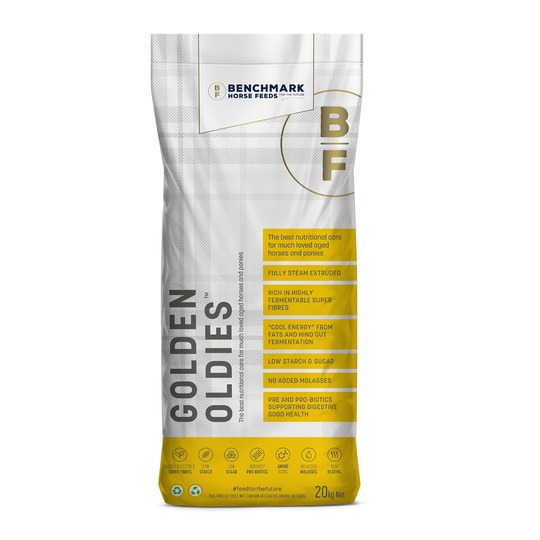FEEDING THE SENIOR HORSE RIGHT WITH BENCH MARK FEEDS & HAYLAGE
Dr Mark Barnett PhD, MTB Equine Services
Equine Nutritional Consultant for Benchmark Feeds
Your horse is now in its senior years.In its so-called Golden Years of life where things slow down and life is meantto be enjoyed more with less work and hassles. One thing that you have noticed is that your elderly friend isn’tholding condition as well as previously.In fact, he/she is starting to look a little thin, even showing some ribs andbone over the rump. You are still providing plenty of feed but your horse just can’t seem to put the weight onanymore.Why?What’s going on?Well, simply put, your senior horse isn’t quite getting the right feed for what itneeds.
Older horses, like all things older, don’t work as well as they used to. Their metabolism is slower, they don’t havethe energy they used to or the muscle mass to do so. Their teeth are no longer as good as they were and theirappetite often isn’t quite as voracious as it used to be. Once again, putting it simply, you need to think differentlyas to how you feed your senior horse.
Many people continue to feed high sugar and starch, grain-based feeds to horses in their older years, mainlybecause of the belief that an older horse needs more energy to maintain condition and grains have more energy inthem than anything else. What if I said that that’s not true!So, what is? Feeds high in quality fermentable fibresand fats/oil.
Fibre? How can fibre have more energy than grains like barley, oats, corn and wheat?Aren’t fibres like hay andgrass?Yes, hay and grasses are indeed fibres but they are not readily digested in the horse’s hindgut.In fact,some fibres like most hays, chaff and some older grasses are less than 50% digested.What I’m talking about ishighly fermentable fibres like haylage, soybean hulls, sugar beet pulp, hemp hulls and even lupins. All of these areextensively digested (over 80%) by the billions of microbes found in the hindgut of the horse.
And what do they produce? Quite a lot of things actually. Vitamins, protein, hormones, but most importantly,volatile fatty acids – short chains of fat molecules which can be used as an energy source. The energy density orequivalent DE of these fats are up to 3-times more than the energy density of grains. So, now do you see whyfeeding your senior horse high-quality fermentable fibres can provide more energy to help maintain bodycondition than regular grain-based feeds.
Is that all I need to provide my senior horse to maintain its condition?Quality fermentable fibres? No, but it will help a lot.Some important ones are:
It is ideal that no more that 15% starch be included in the entire diet.
Horses don’t need huge amounts of protein but they do need theessential amino acids such as Lysine, Methionine and Leucineto build muscle.
factor in a senior horse’s feed after the amount of fermentable fibre.These are the catalysts of all normal physiological functions in the horse.Simply put, they make things in the body work.
That’s why it is so essential to have good levels of vitamin A, B, E and in some situations D, in the diet

Everything described above that is essential for maintaining good condition, health and muscle tone of the seniorhorse can easily be found in Benchmark Feed’s Golden Oldies. Containing 40% soybean hulls plus added oil, allmacro-minerals, and very good levels of essential trace minerals, vitamins and key amino acids, BenchmarkFeed’s Golden Oldies is built to provide the best level of quality nutrients and fermentable fibres to help maintainthe health and condition of the senior horse.
Couple this with the scientifically proven benefits of providing haylage, another quality fermentable fibre, such asimproved chewing; saliva production to help prevent gastric ulcers, choke and compaction colic; increasedfermentable energy production; and overall increased digestibility; you have the ideal dietary recipe for yoursenior horse.
As an added bonus, most horses love the taste too!
